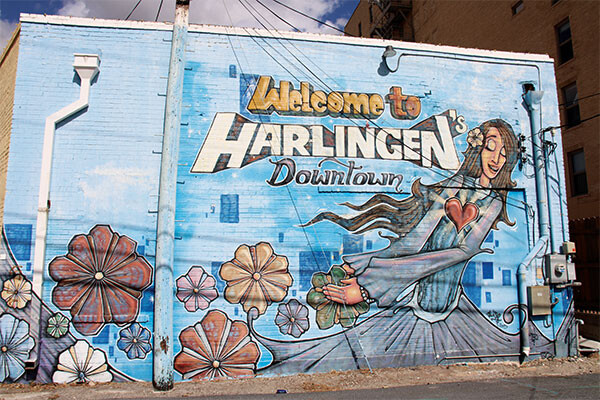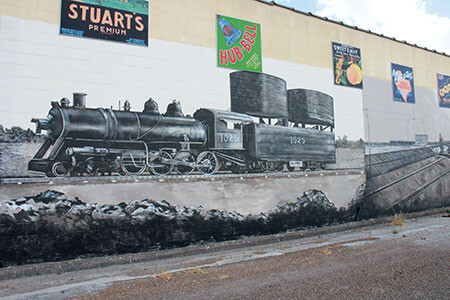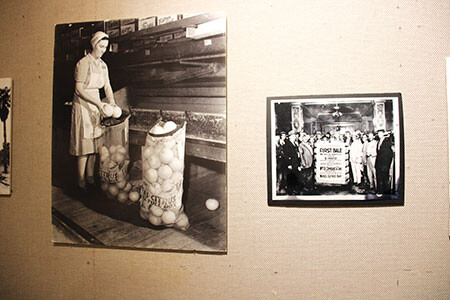 When I think of Harlingen, I usually think about the Military Academy and the museum – but there is much more to Harlingen than that. Harlingen has a history that delves deeper than those few things that pop in our head when we think of the city.
When I think of Harlingen, I usually think about the Military Academy and the museum – but there is much more to Harlingen than that. Harlingen has a history that delves deeper than those few things that pop in our head when we think of the city.
The City of Harlingen was founded in 1904 by Lon C. Hill – and his home was the first residence in the area. He built the regions original irrigation canals that are gravity-fed. This set the stage for farming that eventually became the mainstay for the area economy. 
If you visit the Harlingen Arts and Heritage Museum you can also visit Hill’s home. The Historical Museum is also on the grounds, as is the old hospital and a couple of other old buildings.
The Museum features photos from Harlingen’s heyday. While I was visiting, they had an exhibit that featured antiques from the days of yore and the days of farming with less technology than we have today. They were having a little contest to see who could name each ‘artifact.’ I can tell you, with a farming background and from watching many old movies, I could name nearly every piece they had on display.
About a mile away from the museum is the Iwo Jima Memorial Monument. The monument sits on the campus of the Marine Military Academy.
The outdoor sculpture is the original work of art created by Dr. Felix W. De Weldon, a sculptor serving in the Navy at the time of the war. This sculptor was the model that was created to make the bronze sculpture in Arlington National Cemetery. It was given to the Marine Military Academy in 1981.
 The memorial depicts the six Marines shown in a Pulitzer Prize-winning photograph as they struggled to plant an American flag atop Mount Suribachi on the Pacific Island of Iwo Jima on February 23, 1945. The island had been taken by the Japanese in the early years of the war and the planting of the flag was a symbol to the free world of the struggle going on in the Pacific to preserve freedom.
The memorial depicts the six Marines shown in a Pulitzer Prize-winning photograph as they struggled to plant an American flag atop Mount Suribachi on the Pacific Island of Iwo Jima on February 23, 1945. The island had been taken by the Japanese in the early years of the war and the planting of the flag was a symbol to the free world of the struggle going on in the Pacific to preserve freedom.
Harlon H. Block, a Weslaco native, was 18 years old when he enlisted in the Marine Corps. On the fifth day of battle on the island of Iwo Jima, his platoon was sent to raise that flag on the island’s highest point. The flag raising was captured by Joe Rosenthal. Block was killed on Iwo Jima six days after that flag raising. In 1995, during a ceremony commemorating the 50th anniversary of the battle, Corporal Harlon H. Block was enshrined next to the Iwo Jima Memorial.
There is also a Museum on the grounds that features Marine Corps memorabilia and a veteran’s hall of fame.
Jackson Street in Harlingen is known as its historic area. It is immersed in history and culture with vibrant murals that bring the revitalized area back to life.
Harlingen, like Brownsville, is another great city - as most of our Valley cities are – to just take a walk downtown and enjoy the sites. Historic Downtown Harlingen has been bustling with life for over 100 years. The palm-lined business district offers unique shops, great food, history and more. When taking a walking tour of the historic area, you will walk into areas known as Six Shooter Junction and Silk Stocking Row.
Downtown Harlingen also features 30 vibrant murals that depict the history and culture of the city. From the old cinema downtown to the historic Route 77, murals can be found both inside and outside many of the buildings. The murals depict the music, wildlife, agriculture, and more that made Harlingen what it is today. A full map and description of the murals can be found online at www.downtownharlingen.com.
More information about the history of Harlingen can be found at www.visitharlingentexas.com and myharlingen.us/page/history.













